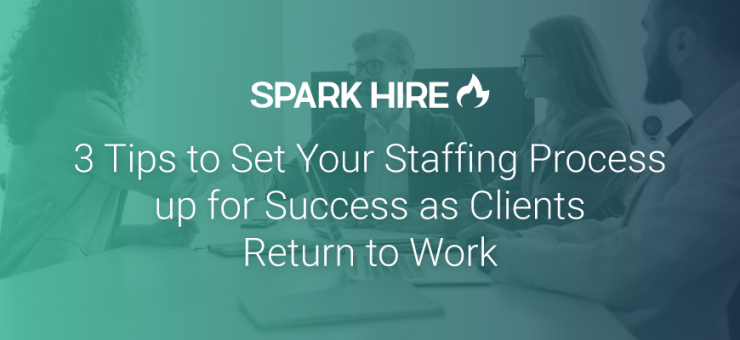Many HR teams are working out their return to work plans at this very moment. That means your staffing team is about to see some new challenges to filling clients’ open roles.
Over the last year and a half, talent has seen the benefits of working from home on a global scale like never before. In fact, the pandemic forced most companies to close their doors for the unforeseen future and employees had to adapt almost instantly. This means, candidates funneling into your talent pool either have experience working remotely, or expect to gain some.
Unfortunately, the remote work model isn’t the long-term goal of most companies, and while many have adopted a hybrid approach for their workforce, return to work seems inevitable for the majority of candidates. As a staffing professional, you need to be prepared to tackle the challenges that come with convincing top talent that your clients’ open roles are top-notch in or out of the office.
Here are three ways you can get candidates on board with your clients’ return to work plans:
Keep return-to-work plans transparent
There’s something about the unknown that doesn’t sit well when it comes to planning your career path. So naturally, candidates want to be clued in about where they will work as much as any other detail about the job. This can be tricky when your clients are still ironing out the details of their return to work plan.
The best way to keep top talent invested in your job opportunities is to be as informed and as transparent as possible. This doesn’t always mean you have all the answers. But it does require you to have a clear way to communicate what you do know and a timeline for updates as you gain more information.
Go beyond learning about whether clients will require everyone to return to the office and gain insight on what they’re considering as far as their transition support, onboarding process for new candidates who will move into office roles soon, whether flexible work options are on the table, and if there will be changes to pay, benefits, or the workspace.
And be prepared to take candidate questions and feedback to build out your surveys for clients. After all, you don’t know what you don’t know! To get candidates the information they need to get excited about your clients’ open roles, you need to get in their heads and address their concerns directly.
Recommended Reading: Make sure your team is Adapting to Change – Conquer Disruptions to the Staffing Process
Bridge the gap between client and candidate concerns
You’d be remiss to overlook your clients’ concerns in the talent sourcing process. They could likely use some feedback about candidates’ concerns as they build out their return to work hiring plan. After all, you funnel talent into their hiring process. HR pros rely on your experience with return to work recruiting to ensure they meet candidate expectations after the handoff.
Sit down and discuss return to work hiring concerns with your clients. What do they worry about regarding skills and experience gaps? What remote work skills do they value most moving back into the workplace? What changes have they made or do they plan to make that they feel will excite talent most? What do they worry will dissuade them from accepting offers?
You can use the insight you gain from candidate expectations to inform clients of ways they can improve their return to work hiring plan and the candidate experience in the process. Having an open line of communication with both clients and candidates as everyone works through the transition of returning to work allows you to ease concerns and streamline placements.
Recommended Reading: Check out 8 ways video interviews ease candidate stress during the staffing process!
Help talent see the big picture
Helping talent visualize themselves in their new work environment is notably more difficult than pre-pandemic when you lack current branding content. After all, the workplace could look different, the culture has likely changed, and the company may have even experienced turnover meaning the workforce is brand new. But as you gain more insight from clients and candidates, you’re able to paint a full picture of the return to work plan.
While you may not have examples from the client that show how their return to work environment and culture will look, you can reassure candidates that their values and goals still align. Lay out a plan for how they can reach their goals with the company no matter how their role evolves. You can do this by helping them connect with leaders in the staffing process through video messages and interviews.
You can also share details such as communication and workflow platforms the team uses to stay connected in and out of the office, how the company’s mentorship program works, and what development opportunities exist. If you have examples of ways your clients’ teams collaborated remotely and testimonials from existing employees, be sure to include both when sourcing and attracting candidates.
The key to a successful staffing process while clients work toward refining their return to work hiring plans is in the details, literally. Learn as much as you can about client concerns, candidate expectations, and the risks and rewards of roles no matter where they end up. The more you know, the greater an asset you will be to talent and HR pros alike.












